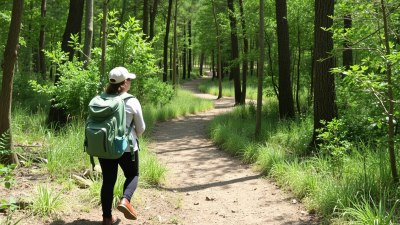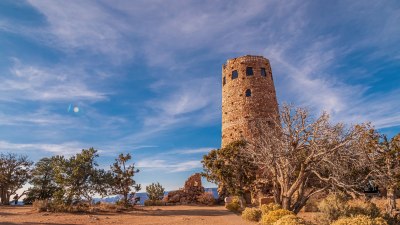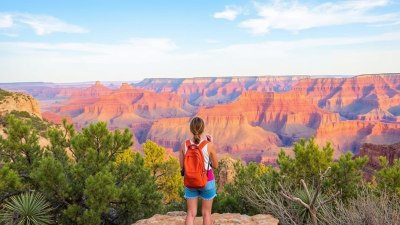Learning to Identify Local Trees and Plants on Nature Walks
Discover tips and tricks for identifying local trees and plants during enriching nature walks.

Image created with Flux Schnell
Nature walks provide not only a refreshing escape from our busy lives but also an opportunity to reconnect with the natural world. One of the most rewarding aspects of exploring the outdoors is learning to identify the trees and plants that make up the landscape around us. This article will delve into practical techniques for identifying local flora and offer insights into their ecological significance. Whether you're a beginner or looking to enhance your knowledge, these tips will enhance your experience on nature walks.
Understanding Local Ecosystems
Before embarking on a nature walk, it helps to have a basic understanding of your local ecosystem. Every area has its unique climate, soil types, and topography that influence which trees and plants thrive there. Start by researching the predominant ecosystem in your region. For instance, you might find yourself in a temperate deciduous forest, a coniferous forest, a prairie, or a wetland environment. Understanding the overall characteristics of these ecosystems will provide a framework for identifying the specific plants and trees you encounter.
Seasonal Changes and Plant Identification
Timing is crucial when identifying trees and plants. Different species exhibit distinct features at various times of the year. Spring may unveil blossoming flowers and new leaves, while autumn might showcase vibrant fall colors and fruiting bodies. Winter, though seemingly devoid of life, can also reveal important identifying characteristics, such as bark texture and branching patterns. Familiarize yourself with the plants and trees that are common in your area and how they change with the seasons to enhance your identification skills.
Key Characteristics to Observe
When you encounter a tree or plant, several key characteristics can aid in its identification. Start by focusing on the leaves, which are often the most distinguishing features. Examine the leaf shape, size, margin (smooth, serrated, etc.), and texture. Additionally, the arrangement of leaves along the stem—whether they are opposite, alternate, or whorled—can help narrow down possibilities.
Next, observe the bark of trees. The color, texture, and pattern of the bark can be crucial. Some trees have distinctive scaly, flaky, or smooth bark that can lead you directly to the species. Pay attention to the overall shape and size of the tree as well. Is it tall and straight, or does it have a wide, spreading crown?
Utilizing Field Guides and Apps
One of the best ways to enhance your tree and plant identification skills is through the use of field guides and mobile apps. Numerous field guides are available that detail the flora of specific regions, providing images and descriptions that can significantly aid identification efforts. Look for guides that provide illustrations and photographs, which can help you recognize subtle differences between similar species.
In addition to traditional field guides, mobile apps have revolutionized the way people identify plants and trees. Apps like PlantSnap, Leafsnap, and iNaturalist allow you to take a picture of a leaf, flower, or tree, and receive instant identification suggestions. They often include information about the plant’s habitat, growth habits, and other interesting facts, enhancing the educational aspect of your nature walks.
Joining Local Nature Groups
Consider joining local nature groups or clubs devoted to plant and tree identification. These groups often host nature walks and workshops that provide hands-on learning opportunities. Engaging with others who share your interests can be incredibly beneficial. Experienced naturalists can share their knowledge, and group walks provide a chance to ask questions and learn in a social, enjoyable setting. Many parks and conservation organizations offer guided tours, which can enhance your understanding of local flora.
Keeping a Nature Journal
Maintaining a nature journal can significantly improve your identification skills while deepening your appreciation of nature. Document your observations during nature walks, recording detailed descriptions of plants and trees you encounter. Sketching leaves or flowers can help with memorization and provide a visual cue for future reference. Jot down notes on the location and habitat of specific plants, as knowing where to find them can aid in their identification later. Over time, your journal will become a personal resource filled with illustrations, notes, and your evolving understanding of local ecosystems.
Learning to Recognize Plant Families
Learning to identify plants by family can be extremely beneficial, as many plants within the same family share similar characteristics. For instance, members of the Rose family (Rosaceae) often have distinct flower structures, while the Mint family (Lamiaceae) includes plants with square stems and aromatic leaves. By focusing on common plant families, you can streamline the process of identification. Start with a few families you frequently encounter and study their common traits—this will reinforce your skills and confidence.
The Role of Trees and Plants in Ecosystems
Understanding the ecological roles that trees and plants play is vital to appreciating them fully. Trees provide habitat and food for countless organisms, influencing local biodiversity. They also play a crucial role in carbon sequestration, improving air quality and mitigating climate change. Knowing the benefits of maintaining healthy plant communities can enhance your commitment to conservation and inspire you to engage in activities aimed at protecting these vital resources.
Mindfulness in Nature Observation
Embracing mindfulness during your nature walks can greatly enrich your experience. Slow down and take the time to appreciate the beauty around you. Rather than rushing to identify every plant, focus on a few key specimens for in-depth study. By practicing mindfulness, you will develop a deeper connection with nature and improve your observational skills, ultimately enhancing your ability to identify various species.
Safety and Environmental Considerations
While identification is crucial, it’s also important to consider safety and environmental impact. Some plants and trees are toxic, so make sure you thoroughly research any plant before attempting to touch or consume it. Additionally, follow ethical guidelines when interacting with nature. Avoid trampling vegetation, and be respectful of wildlife habitats. When documenting species, consider using environmental DNA sampling, which entails collecting samples without disturbing the organisms.
Engaging Children in Nature Walks
If you have kids, involve them in learning about local trees and plants during nature walks. Create a scavenger hunt with a list of items to find, such as specific leaf shapes or flowers. Encourage them to observe colors, textures, and shapes while fostering curiosity about nature. Tools such as magnifying glasses and field guides can make the experience interactive and educational. Instilling a love of nature in the next generation is vital for conservation efforts and may inspire future environmental stewards.
Learning to identify local trees and plants enriches nature walks and fosters a deeper appreciation for the natural world. By equipping yourself with observational skills, utilizing resources, engaging with communities, and maintaining a nature journal, you will significantly enhance your ability to recognize local flora. Every tree and plant has a story to tell; by becoming more knowledgeable, you not only heighten your personal experience but also contribute to the larger dialogue about conservation and appreciation of our natural environment.











